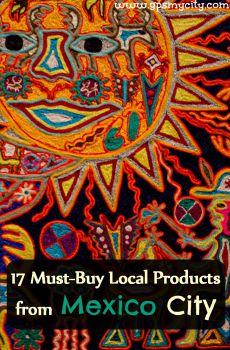Alameda Central Park, Mexico City
Alameda Central is the largest oasis of greenery in downtown Mexico City. Although flanked by bustling avenues on all sides, this tree-filled garden offers a quiet respite from the clamoring Centro Histórico. The name Alameda comes from the Spanish word "álamo", which means a poplar tree (which are planted here in abundance).
This is the oldest public park in the Americas. It was created in 1592 by the Spanish Viceroy Luis de Velasco II as part of a gentrification plan for what was then the western edge of the city. Centuries ago, in the pre-Colombian era, the area was a busy marketplace.
Originally, the park was less than half of its present size. What is now the western section of the park was a plain plaza built during the Inquisition period and was known as The Burning Place (El Quemadero), where witches and heretics were burned at the stake. By the 1760s, the Inquisition tyranny largely came to an end, and in 1770 the plaza was cleared to make space for the expanding park.
Another round of expansion, in 1791, saw a wooden fence installed to create an exclusive leisure spot for the nobles. After the Mexican Independence, the Alameda became the center of public celebrations. In 1846, President Santa Anna rode triumphantly into the city and ordered that all the park fountains be filled with alcohol.
On the south side of the park is a large white, semi-circular monument with eight marble columns – it is dedicated to Benito Juárez, one of Mexico's most loved presidents. There are also five classical fountains, of French design, inspired by Greco-Roman mythology.
Much of the park's current features, such as the starburst pattern of paths around the fountains and the central kiosk, were laid out in the late 19th and early 20th centuries. Among the statues here is a monument to Beethoven donated by the German community in commemoration of the centenary of his 9th Symphony.
The popular spirit of Alameda has been celebrated by Diego Rivera in his famous mural "Dream of a Sunday Afternoon in Alameda Park", displayed at the Diego Rivera Mural Museum (Museo Mural Diego Rivera) on the western edge of the park.
This is the oldest public park in the Americas. It was created in 1592 by the Spanish Viceroy Luis de Velasco II as part of a gentrification plan for what was then the western edge of the city. Centuries ago, in the pre-Colombian era, the area was a busy marketplace.
Originally, the park was less than half of its present size. What is now the western section of the park was a plain plaza built during the Inquisition period and was known as The Burning Place (El Quemadero), where witches and heretics were burned at the stake. By the 1760s, the Inquisition tyranny largely came to an end, and in 1770 the plaza was cleared to make space for the expanding park.
Another round of expansion, in 1791, saw a wooden fence installed to create an exclusive leisure spot for the nobles. After the Mexican Independence, the Alameda became the center of public celebrations. In 1846, President Santa Anna rode triumphantly into the city and ordered that all the park fountains be filled with alcohol.
On the south side of the park is a large white, semi-circular monument with eight marble columns – it is dedicated to Benito Juárez, one of Mexico's most loved presidents. There are also five classical fountains, of French design, inspired by Greco-Roman mythology.
Much of the park's current features, such as the starburst pattern of paths around the fountains and the central kiosk, were laid out in the late 19th and early 20th centuries. Among the statues here is a monument to Beethoven donated by the German community in commemoration of the centenary of his 9th Symphony.
The popular spirit of Alameda has been celebrated by Diego Rivera in his famous mural "Dream of a Sunday Afternoon in Alameda Park", displayed at the Diego Rivera Mural Museum (Museo Mural Diego Rivera) on the western edge of the park.
Want to visit this sight? Check out these Self-Guided Walking Tours in Mexico City. Alternatively, you can download the mobile app "GPSmyCity: Walks in 1K+ Cities" from Apple App Store or Google Play Store. The app turns your mobile device to a personal tour guide and it works offline, so no data plan is needed when traveling abroad.
Alameda Central Park on Map
Sight Name: Alameda Central Park
Sight Location: Mexico City, Mexico (See walking tours in Mexico City)
Sight Type: Attraction/Landmark
Guide(s) Containing This Sight:
Sight Location: Mexico City, Mexico (See walking tours in Mexico City)
Sight Type: Attraction/Landmark
Guide(s) Containing This Sight:
Walking Tours in Mexico City, Mexico
Create Your Own Walk in Mexico City
Creating your own self-guided walk in Mexico City is easy and fun. Choose the city attractions that you want to see and a walk route map will be created just for you. You can even set your hotel as the start point of the walk.
Coyoacan District Walking Tour
Translated from the Nahuatle language as “The Land of Coyotes”, Coyoacán is a relatively quiet neighborhood in the southern part of Mexico City. Formerly a rural village, over the years Coyoacán has become a rich pocket of art and history in the capital, closely associated with some iconic figures of the 20th century and the tumultuous times in which they lived.
One of its most famous... view more
Tour Duration: 1 Hour(s)
Travel Distance: 2.6 Km or 1.6 Miles
One of its most famous... view more
Tour Duration: 1 Hour(s)
Travel Distance: 2.6 Km or 1.6 Miles
Historic Center Walking Tour
Mexico City is the oldest capital in the Americas and is one of the two founded by indigenous people. Originally known as Mexico Tenochtitlan, the city was built by the Mexicas (aka Aztecs) in 1325. According to a legend, the Mexicas' principal god, Huitzilopochtli, pointed out the site of the future settlement with an image of a golden eagle perched on a prickly pear cactus, devouring a... view more
Tour Duration: 2 Hour(s)
Travel Distance: 2.7 Km or 1.7 Miles
Tour Duration: 2 Hour(s)
Travel Distance: 2.7 Km or 1.7 Miles
Historic Center Food Tour
A combination of history and tradition in Mexico City permeates all aspects of life, including food. For centuries, food and drink have been an inseparable part of the city's culture. Within Mexico City's bustling historic center, you can find a variety of culinary gems that offer a taste of what we call diverse Mexican cuisine.
One of the must-visit spots here is the San Juan Market.... view more
Tour Duration: 1 Hour(s)
Travel Distance: 1.6 Km or 1 Miles
One of the must-visit spots here is the San Juan Market.... view more
Tour Duration: 1 Hour(s)
Travel Distance: 1.6 Km or 1 Miles
Chapultepec Park Walking Tour
Nicknamed "the Lungs of Mexico City", Chapultepec Park is a vast oasis of lush greenery in the heart of the Mexican capital, sprawling over 686 hectares of land, providing a vital source of oxygen for the city. Rich in natural beauty, historical landmarks, and vibrant atmosphere, throughout centuries, this park has inspired various works of literature, poetry, and visual art, further... view more
Tour Duration: 2 Hour(s)
Travel Distance: 3.8 Km or 2.4 Miles
Tour Duration: 2 Hour(s)
Travel Distance: 3.8 Km or 2.4 Miles
Zona Rosa Walking Tour
Zona Rosa, or "Pink Zone" in English, is a vibrant neighborhood near the historic center of the Mexican capital which is known for its lively atmosphere and diverse cultural scene. The neighborhood's name comes from the pink-colored tiles abundantly used to pave the local streets.
The area rose to prominence in the early 20th century as a residential district for the wealthy... view more
Tour Duration: 2 Hour(s)
Travel Distance: 3.7 Km or 2.3 Miles
The area rose to prominence in the early 20th century as a residential district for the wealthy... view more
Tour Duration: 2 Hour(s)
Travel Distance: 3.7 Km or 2.3 Miles
Useful Travel Guides for Planning Your Trip
Souvenir Shopping Guide: 17 Must-Buy Local Products from Mexico City
Both historic and modern day Mexico's are worth each other in terms of cultural and artistic heritage. The country's capital Mexico City is a showroom of what the label "Made in Mexico" stands for in its entirety. Whether it's authentic food, drink or piece of craftsmanship...
10 Must-Try Mexican Foods in Mexico City
While Mexico is a treasure trove in terms of cultural and artistic heritage (ancient history, architecture, etc.), the vast majority of visitors to the country are lured mainly by, let's face it, bodily pleasures. The latter are manifested in the form of sandy beaches, sun and, most...










